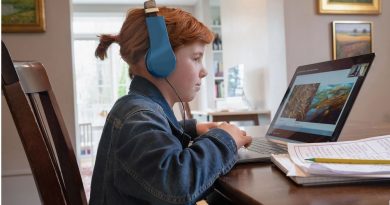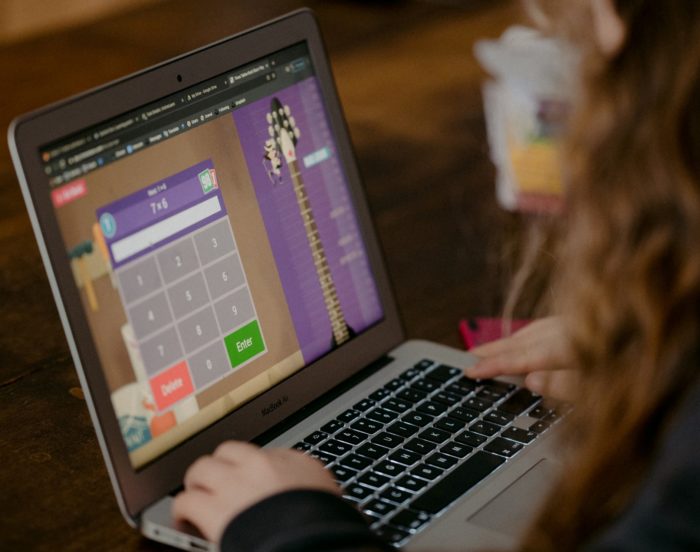Empathy Is a Crucial Skill. Here Is How We Are Teaching It to Our Students.
I had to use the bathroom. Badly.
Yet, there were 22 students sitting in my classroom finishing their independent reading activity.
The timer went off. Twenty-two heads snapped up to attention. One boy raised his hand—the same boy who always does after silent sustained reading—to ask, “Ms. Adams, what are we doing today?”
Bathroom! My body reminded me.
“Okaaaay,” I called them to attention. “I am going to run down to the bathroom. I will be back in three minutes.” I knew it would be closer to five, but I lied. On my way out, I tapped a student on the shoulder, “You’re in charge.” He sat up, grinning proudly at his new level of responsibility.
After finally finding a teacher’s bathroom – the nearest of which was two floors down from my classroom – I suddenly remembered: there was a new student arriving today!
I tried to assure myself that there was no way the new student would show up during the few minutes I stepped out. As I raced back to the classroom, I became anxious. During my training to become a teacher, the importance of making sure students start off with a strong foundation the moment they walk through the door was ingrained in me. As I rushed into the classroom to mend the situation, I stopped.
There, kneeling next to the new student’s desk, was the student I’d put in charge. He was pointing to the assignment and explaining the directions quietly to the new student. As I got closer, I heard him ask, “Are you confused about anything?” The new student shook his head. “Okay, well, you can work with me if you want, and don’t forget to put your first and last name at the top.”
He then looked up after noticing me watching and gave what I could only describe as an intensely enthusiastic thumbs up. It was in that simple but important moment that I was reminded of the innate kindness of my students.
Students are often pitted against each other in the classroom. They are taught that to do well, they must rise above those around them, and the journey to success is an individual undertaking. But in my time as an educator, I have learned that not only can students succeed when given opportunities to grow and learn in the community, they thrive.
Strength in Community
In a small town like Kona, community is the foundation of everything. It is about looking out for your neighbor, watching your friend’s back, and treating even strangers with the utmost love and respect. I see this reflected in my students when they show up for each other every day, simply because shared space is enough.
Realizing this truth has led me to rethink how I define culturally sustaining pedagogy. It’s not solely about shifting the content and curriculum but rethinking the way that I teach to reflect the strengths, values, and priorities of my students.
The ways and means of learning in the classroom should mirror the culture and community of the students in it. The skills I want my students to leave the classroom with are not necessarily how to identify the eight parts of speech, analyze Shakespeare, or write a seven-paragraph argumentative essay. I want them to leave my classroom with the ability to work kindly with others and care about the people around them. I want them to leave with a strengthened sense of empathy and grace. I want them to leave feeling like they were able to foster their natural leadership capabilities.
Rethinking the Means
Unfortunately, our country is obsessed with individualism, and I believe it is this obsession that has led to the stagnant state of our public education system, even in communities like Kona, where community is a coveted value of the people. Individualism is simply not a part of who we are; that is why it is up to educators to rethink the means by which we educate.
- Shift individual assignments into collective activities. There was a distinct and sudden change in the attitude and demeanor of my students when I started evolving individual worksheets into team tasks. For example, something as simple as a skills practice worksheet on citing relevant textual evidence could be turned into a game where working together is the only way to be successful. Suddenly, I had the buy-in I was aching for. Students engaged because others relied on them to do so.
- Allow students to lead. Letting go of control in your classroom is hard, but students need real and authentic opportunities to lead in the classroom. Curate spaces for students at all readiness levels to take a leadership role at some point. Have them check off each other’s homework or guide them on how to facilitate group discussions. They will be empowered by the trust you have put in them.
- Focus on care, not skills. Teachers often spend most of their worrying about standards, assessments, and grades when we should really be focusing on how we ready our students to achieve not only the academic goals we set for them but the personal goals they have for themselves. Being able to empathize with others and care for the people around you allows for true collaboration. We put students into groups, demand them to work together, and then punish them for not doing it “the right way.” There is this strange glass barrier between life in school and outside of school for students, but by nurturing the connection between the two, we can help them learn how to extend community into the classroom and show them how to build empathy and care for others.
The classroom should be a place where a student feels safe to be fearless. A classroom focused on individualism will only lend itself to a strained and stressful environment. Conversely, a classroom centered around the community will provide the space a child needs to truly grow. When we feel supported, loved, and cared for, that is when we’re able to be our best selves, regardless of the context or environment.
After class that morning, I pulled my student aside and thanked him for helping the new member of our classroom. He smiled, patting me on the shoulder lightly, and said, “No worries, Ms. Adams. I got your back.”
Source: https://www.edsurge.com/news/2021-11-15-empathy-is-a-crucial-skill-here-is-how-we-are-teaching-it-to-our-students




